Mid-19th Century small-size brass bound mahogany two-day marine chronometer, signed Richard Hornby, Liverpool, No 265. Chain fusee movement with maintaining power, diamond endstones for the balance wheel, freesprung blued steel helical spring with terminal curve, Earnshaw type detent escapement, cut and compensated bimetallic balance wheel, signed and numbered silvered dial with two subsidiaries: state of wind in 3 hour divisions up to 54 hours; and running seconds. Heavy beveled convex glass, gimbaled bowl, mahogany case with brass mounted corners.
Dimensions of the box: 5.9 x 5.9 x 5.9 in – Dial diameter: 3.5 in. - (15 x 15 x 15 cm – Dial Diameter : 9 cm)
(1810-1872), established in New Scotland Rd, then 42 School Lane (1810-1834) the 36 South Castle St (1839-1872), Liverpool. Used mostly steel balance and Guillaume balance springs with Pooles Auxilliary. He was making his own adjustable spring detent. One of a great clockmaking family, he was a watch and chronometer manufacturer, chronometer maker to the Lords of the Admiralty. From 1851, his title was Hornby, Richard and Sons.
Tony Mercer, Chronometer Makers of the World, 1991, revised 2004; and Jonathan Betts at the National Maritime Museum.
The Ledger of Receipts and Issues of Chronometers reveals that this chronometer was one of a batch sold off to the Indian Government in 1894.
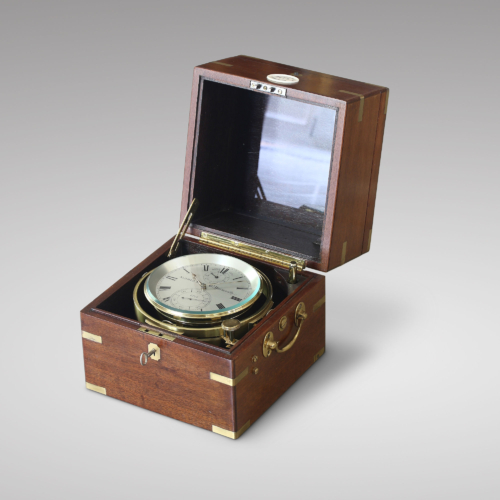
signed Aldred & Son, circa 1880 [...]
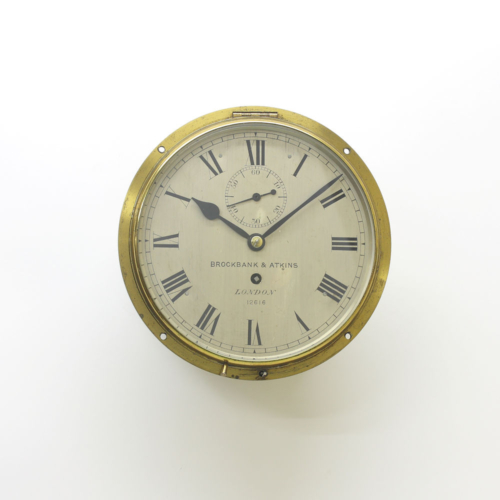
Brockbank & Atkins, English bulkhead clock of good precision, with the main part of the case made to be recessed [...]
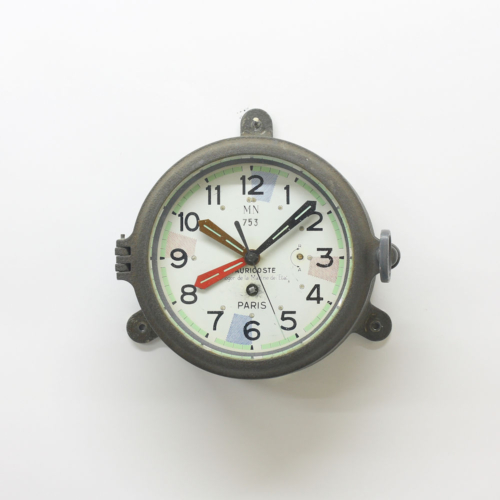
Auricoste, a French Navy 1950s radio room bulkhead clock [...]
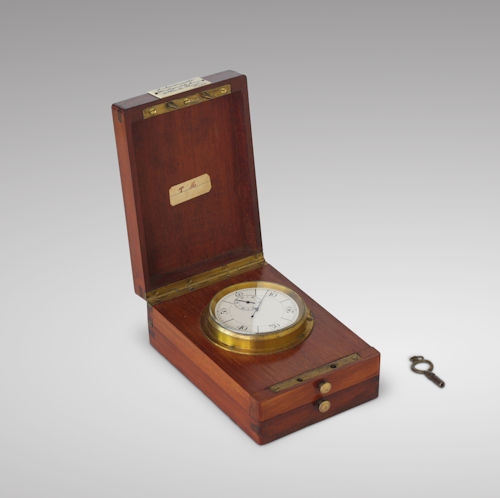
JOSEPH AURICOSTE, Observation Chronometer of small size, for scientific or military use, mahogany case, France, [...]
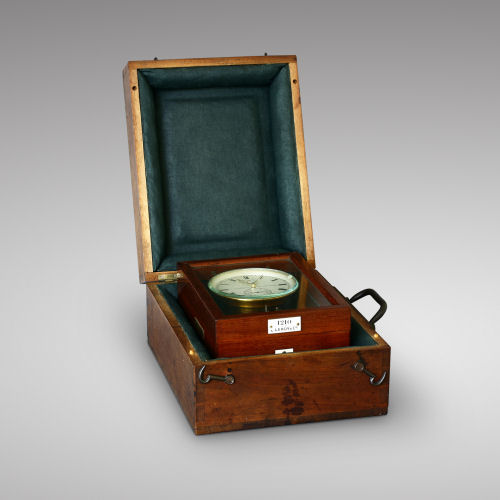
Scientific and observation chronometer, signed L. Leroy and sold in 1913 to General Ferrié [...]
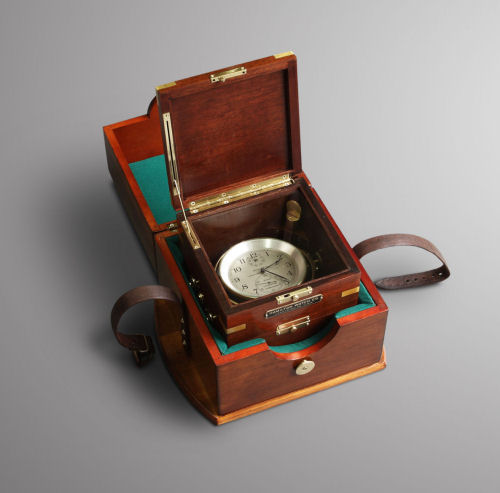
Mahogany Hamilton model 21 two-day marine chronometer, n° 10665, American [...]
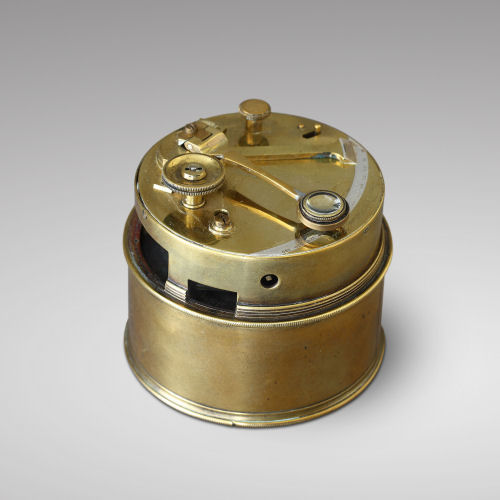
Early pocket sextant, circa 1840, signed W. Harris & Co, Holborn, London [...]
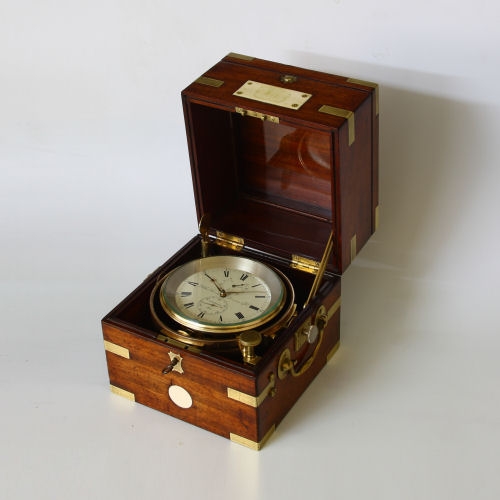
Brass bound mahogany two-day marine chronometer, signed Litherland, Davies & Co, Liverpool [...]
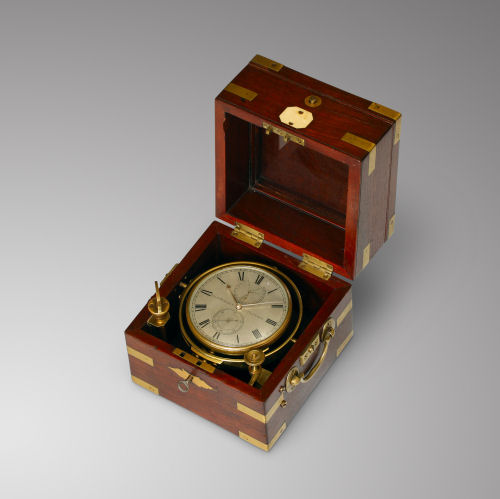
Mid-19th C. small-size two-day marine chronometer, signed Richard Hornby, Liverpool [...]
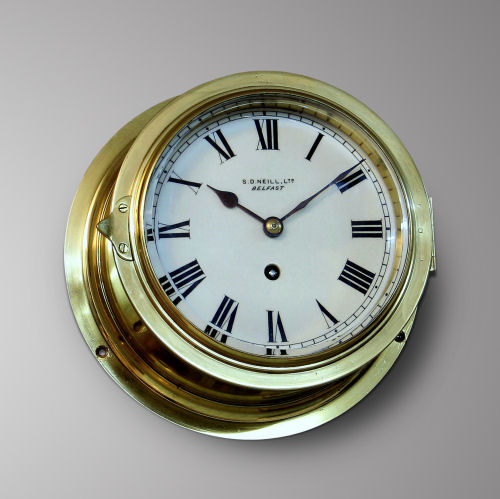
Late Victorian Irish brass ship’s clock, porcelain dial with Roman numerals signed S.D. Neill, Ltd. Belfast, lever [...]
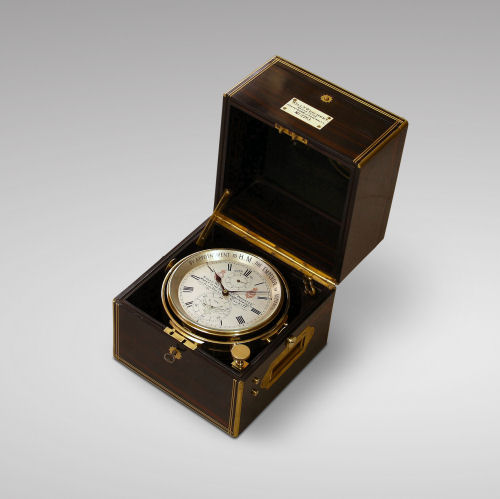
Brass-Bound and mounted coromandel 8-day marine chronometer, WILLIAM WEICHERT CARDIFF, NO. 2261. circa 1875
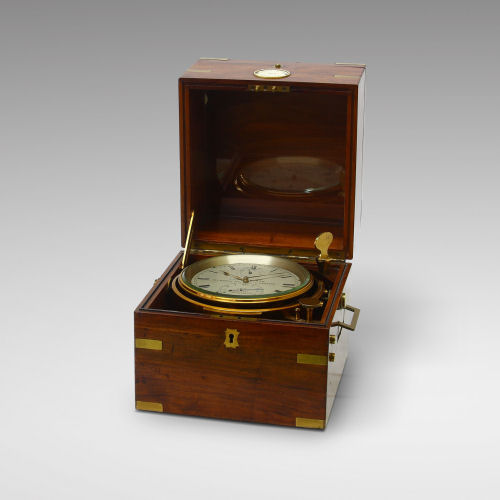
Ship's Chronometer with 8 days power reserve, signed LILLEY & SON, Circa 1900